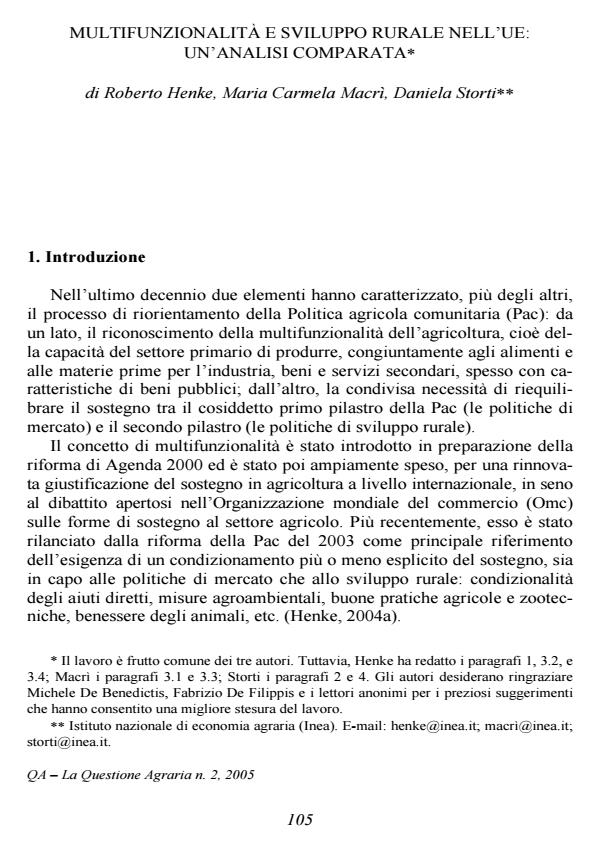Multifunzionalità e sviluppo rurale nell'Ue: un'analisi comparata
Journal title QA Rivista dell’Associazione Rossi-Doria
Author/s Roberto Henke, Maria Carmela Macrì, Daniela Storti
Publishing Year 2005 Issue 2005/2 Language Italian
Pages 29 P. File size 147 KB
DOI
DOI is like a bar code for intellectual property: to have more infomation
click here
Below, you can see the article first page
If you want to buy this article in PDF format, you can do it, following the instructions to buy download credits

FrancoAngeli is member of Publishers International Linking Association, Inc (PILA), a not-for-profit association which run the CrossRef service enabling links to and from online scholarly content.
Multifunctionality and Rural Development in the EU: A Comparative Analysis - The paper focuses on the relationship between multifunctionality in agriculture and rural development policies in the light of the ongoing debate in Europe on possible strategies to enhance the secondary functions of agriculture. More in details, it examines the widespread but ambiguous identification of the so-called Cap "second pillar" policies as the strategy tout court for the valorisation of multifunctionality, especially in their territorial component. Actually, if one accepts the definition of multifunctionality as the joint production of primary (agricultural) and secondary (externalities) goods, it is rather the sector-based component of rural development policies that can contribute to the enhancement of the multifunctional role of agriculture. The paper compares the way multifunctionality has been enhanced within the rural development programmes of three member States (Italy, United Kingdom and France) on the basis of three parameters: the beneficiaries of the specific actions; the nature of the explicit goals pursued; possible constraints imposed on the goals.
Roberto Henke, Maria Carmela Macrì, Daniela Storti, Multifunzionalità e sviluppo rurale nell'Ue: un'analisi comparata in "QA Rivista dell’Associazione Rossi-Doria" 2/2005, pp , DOI: